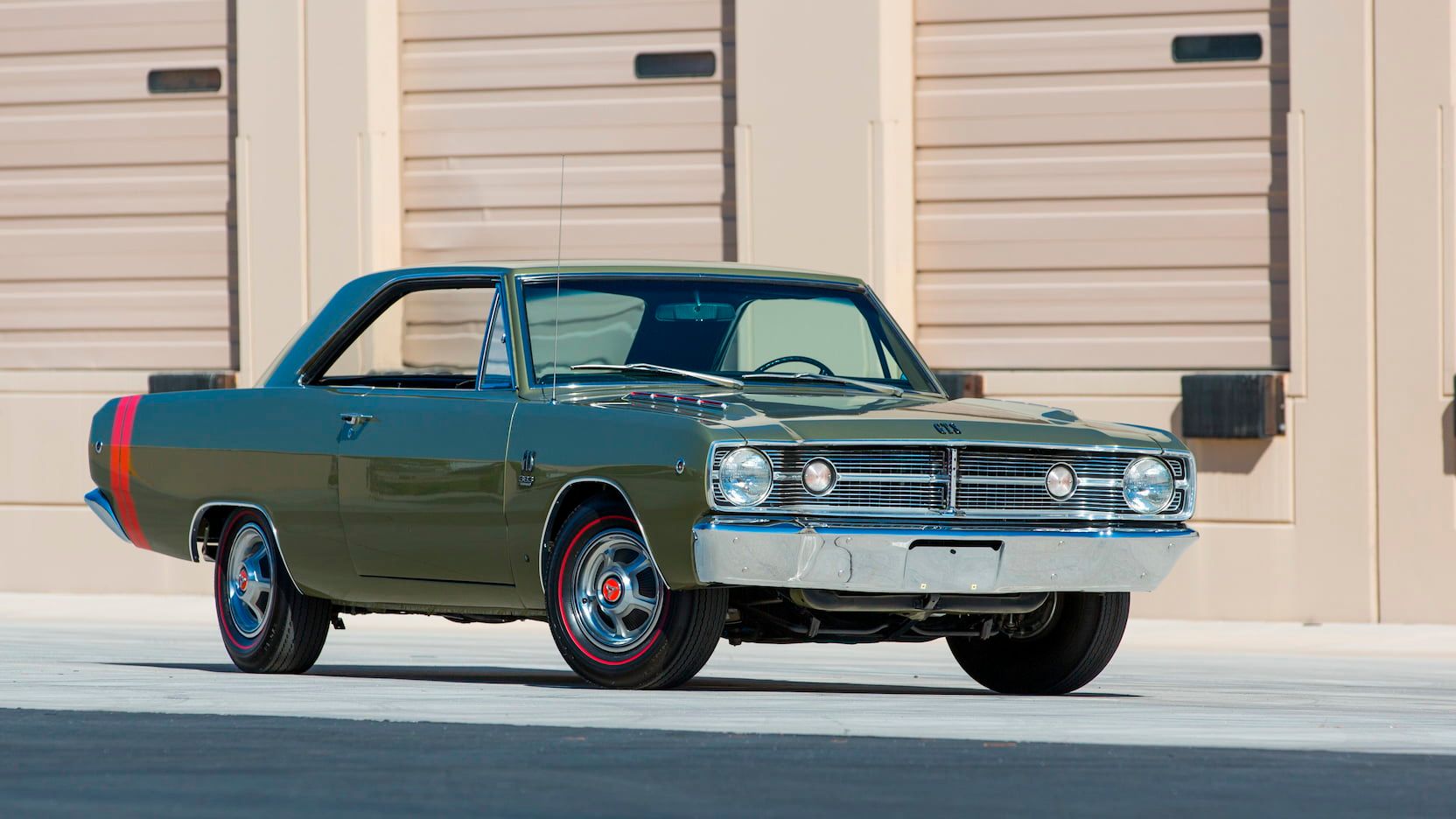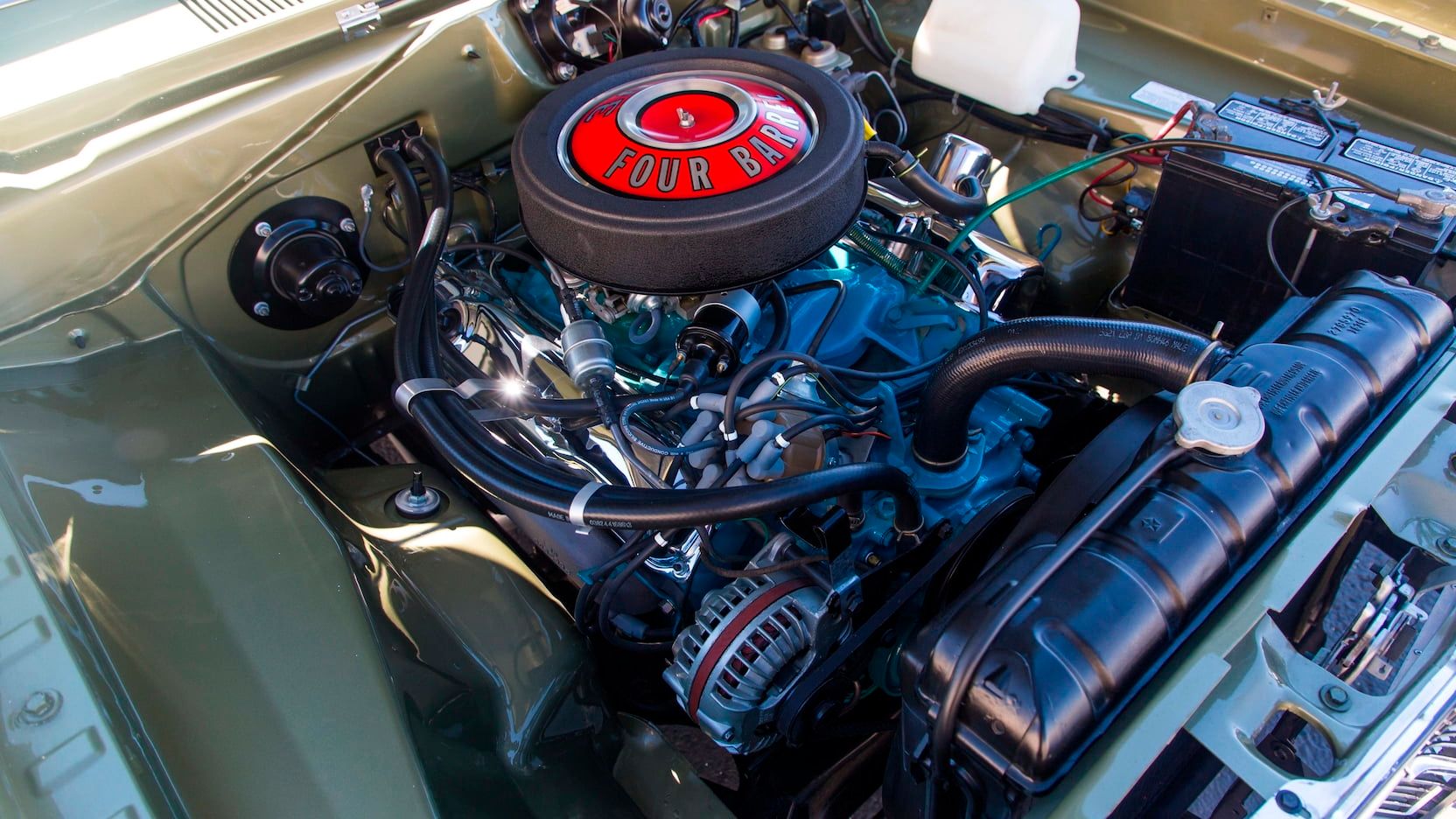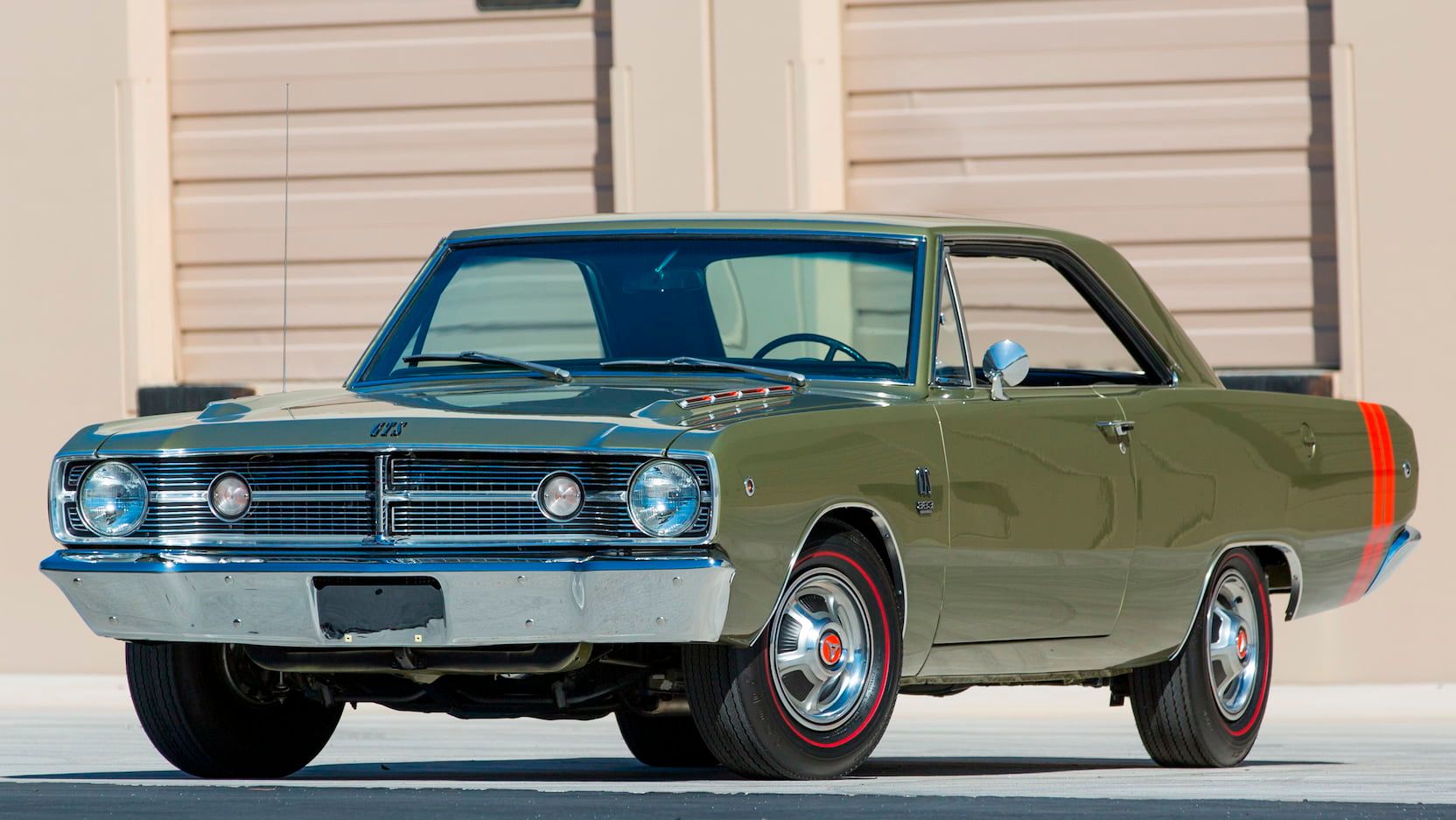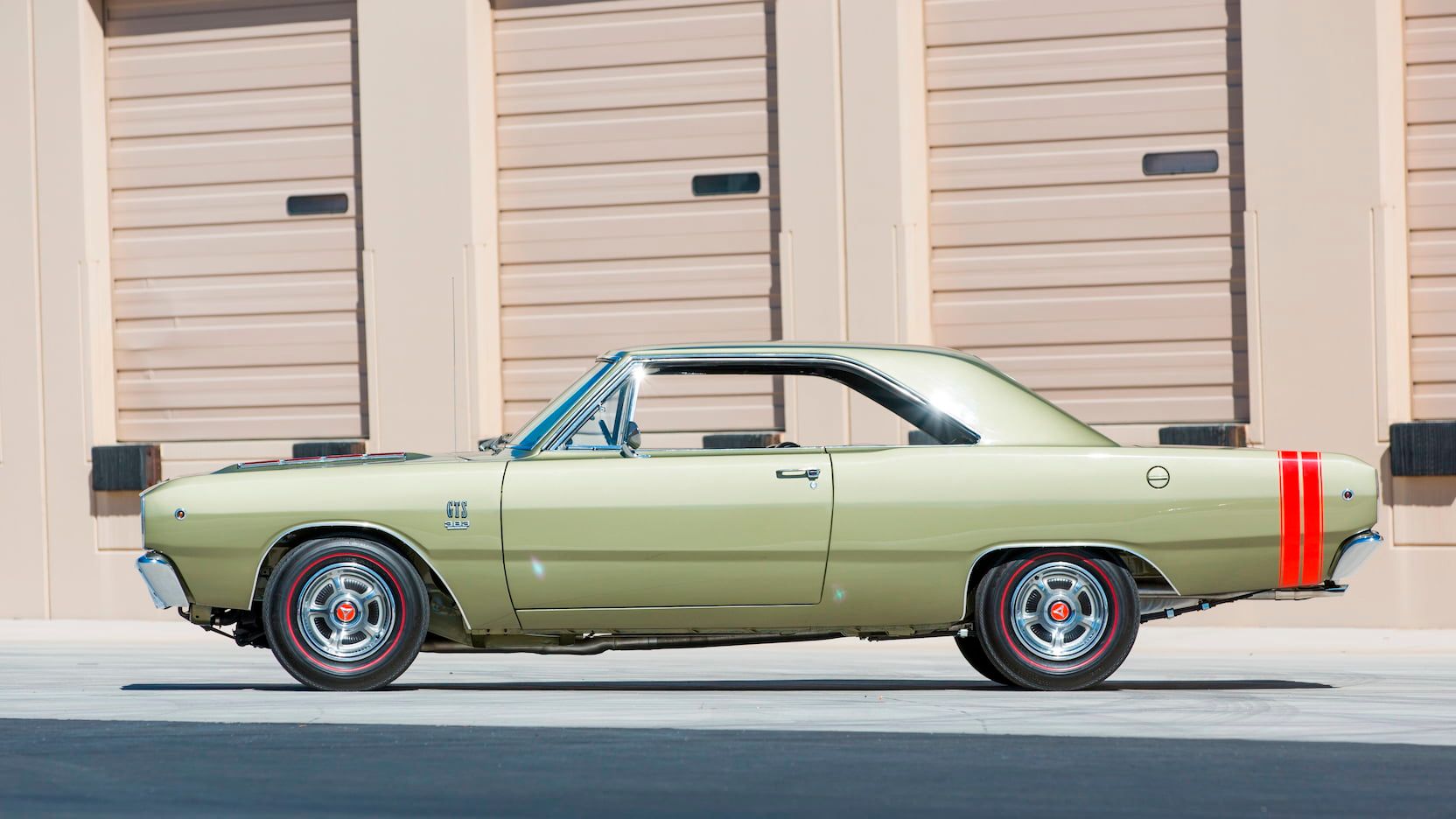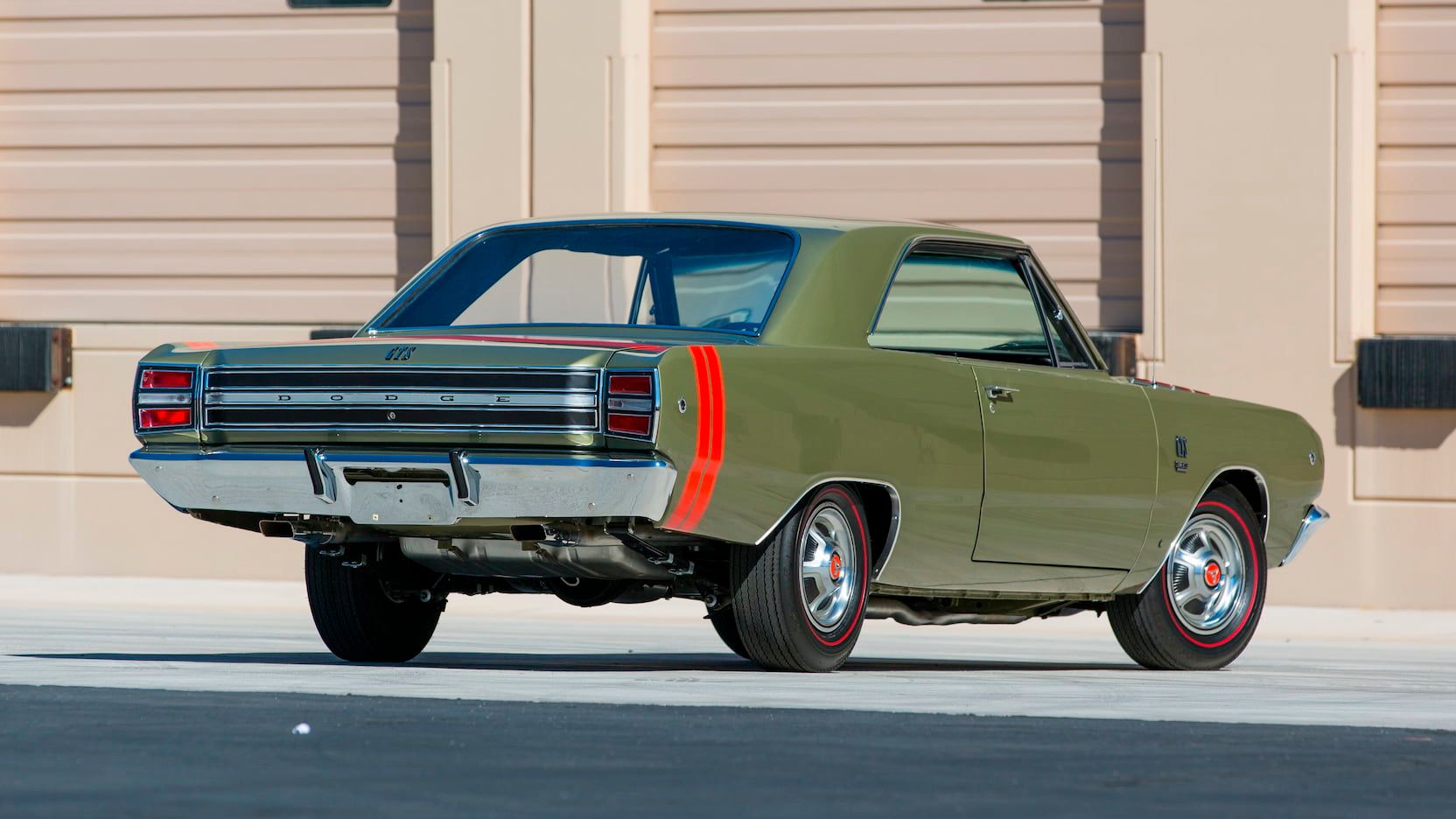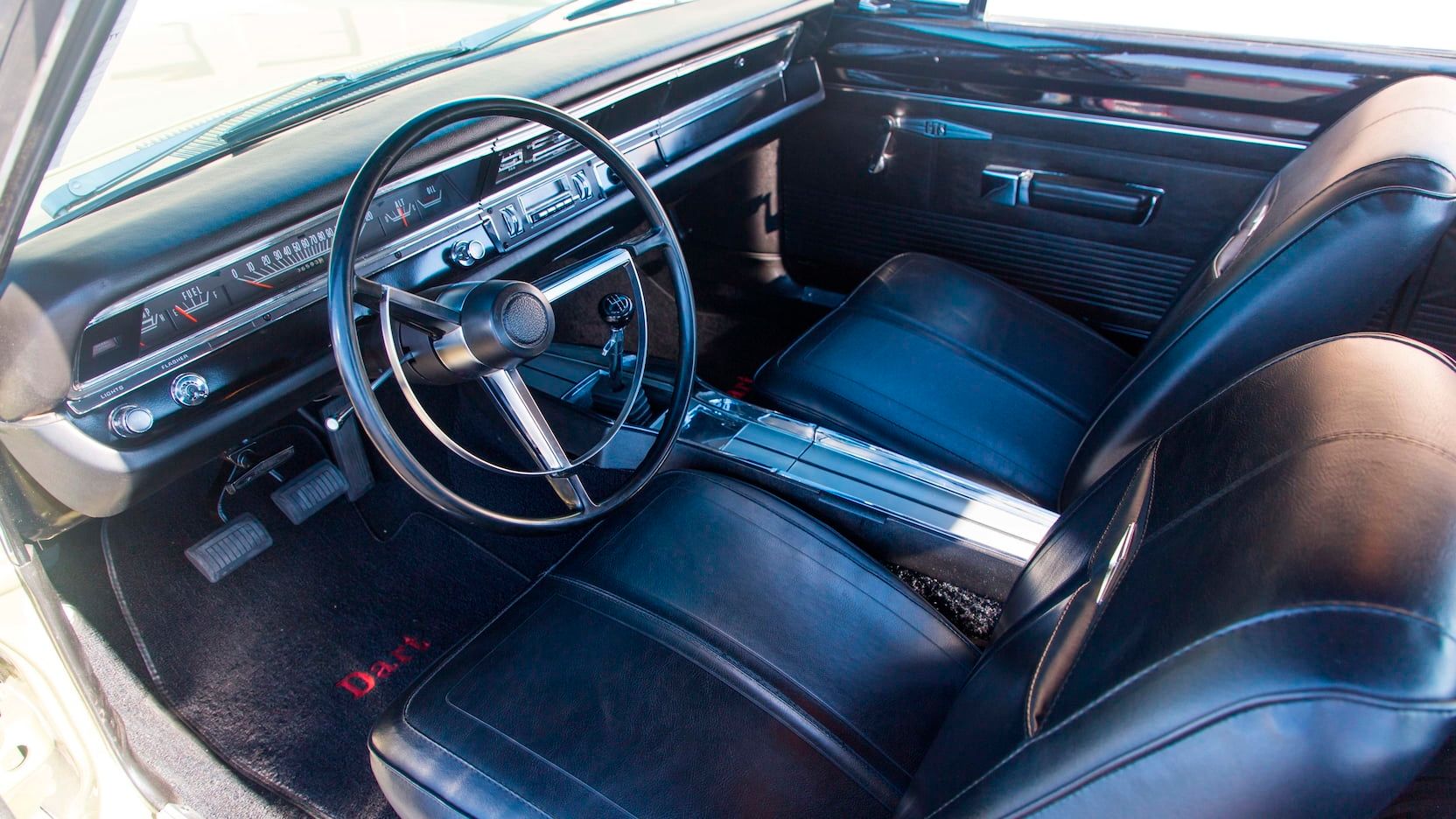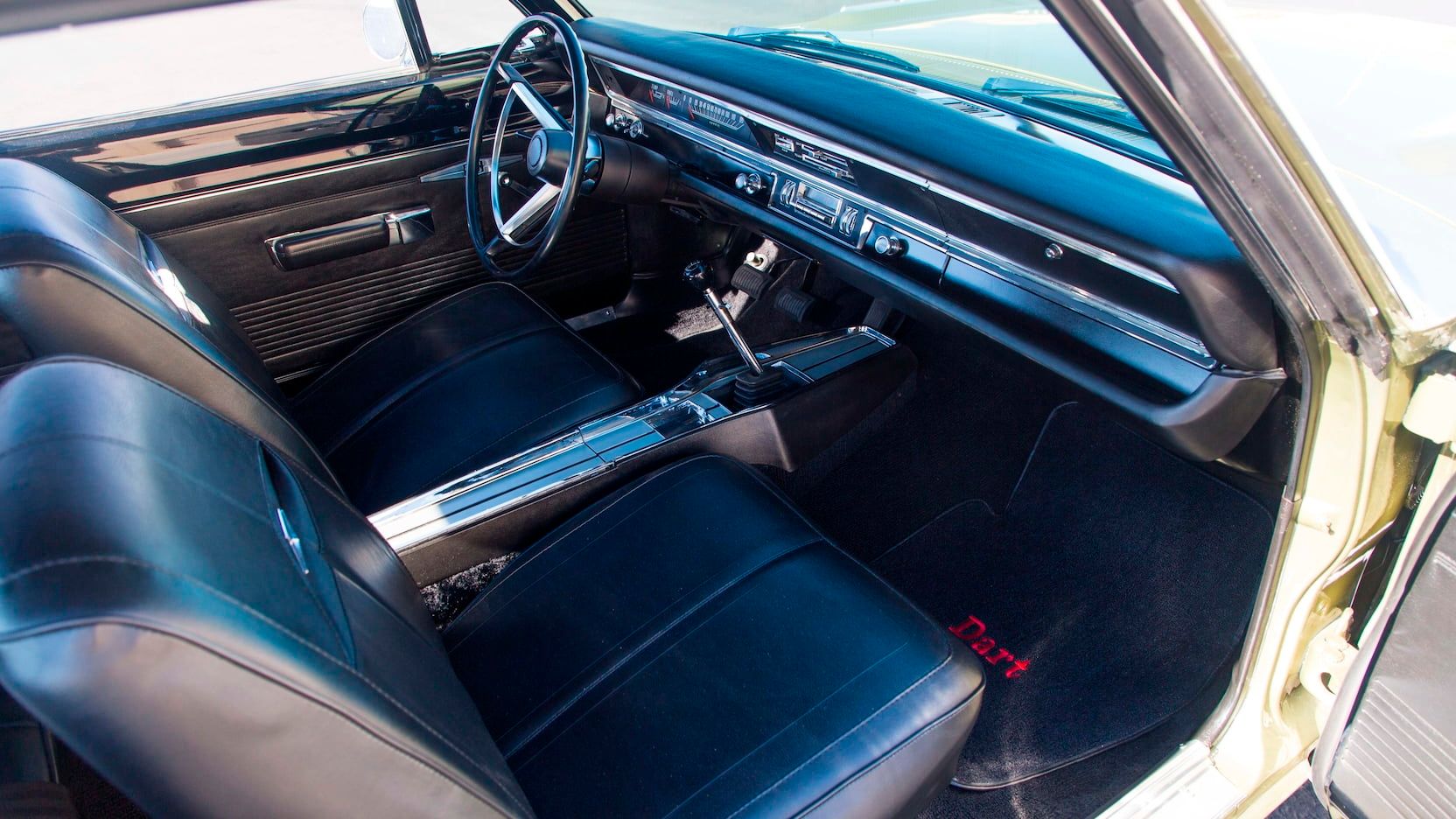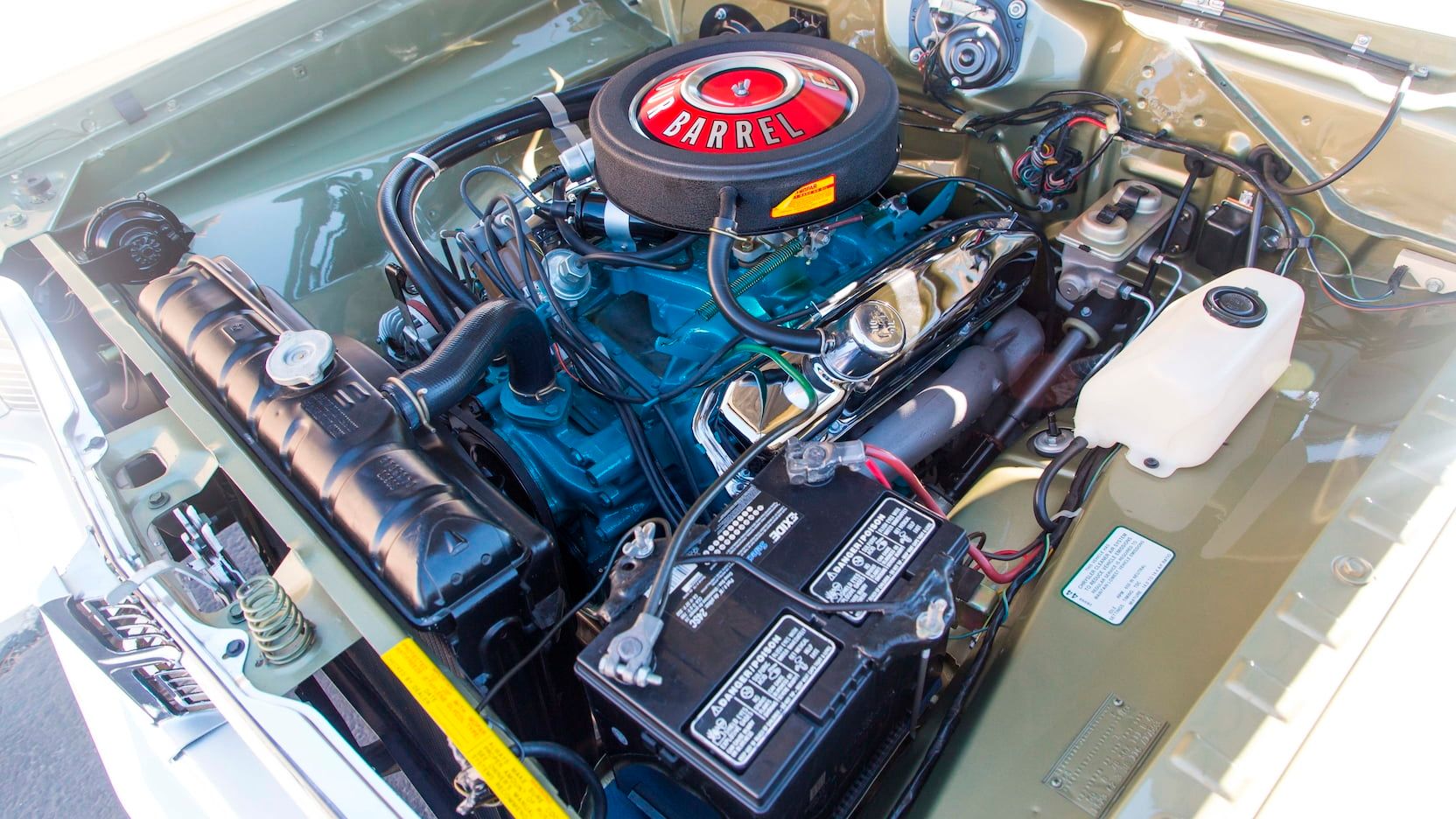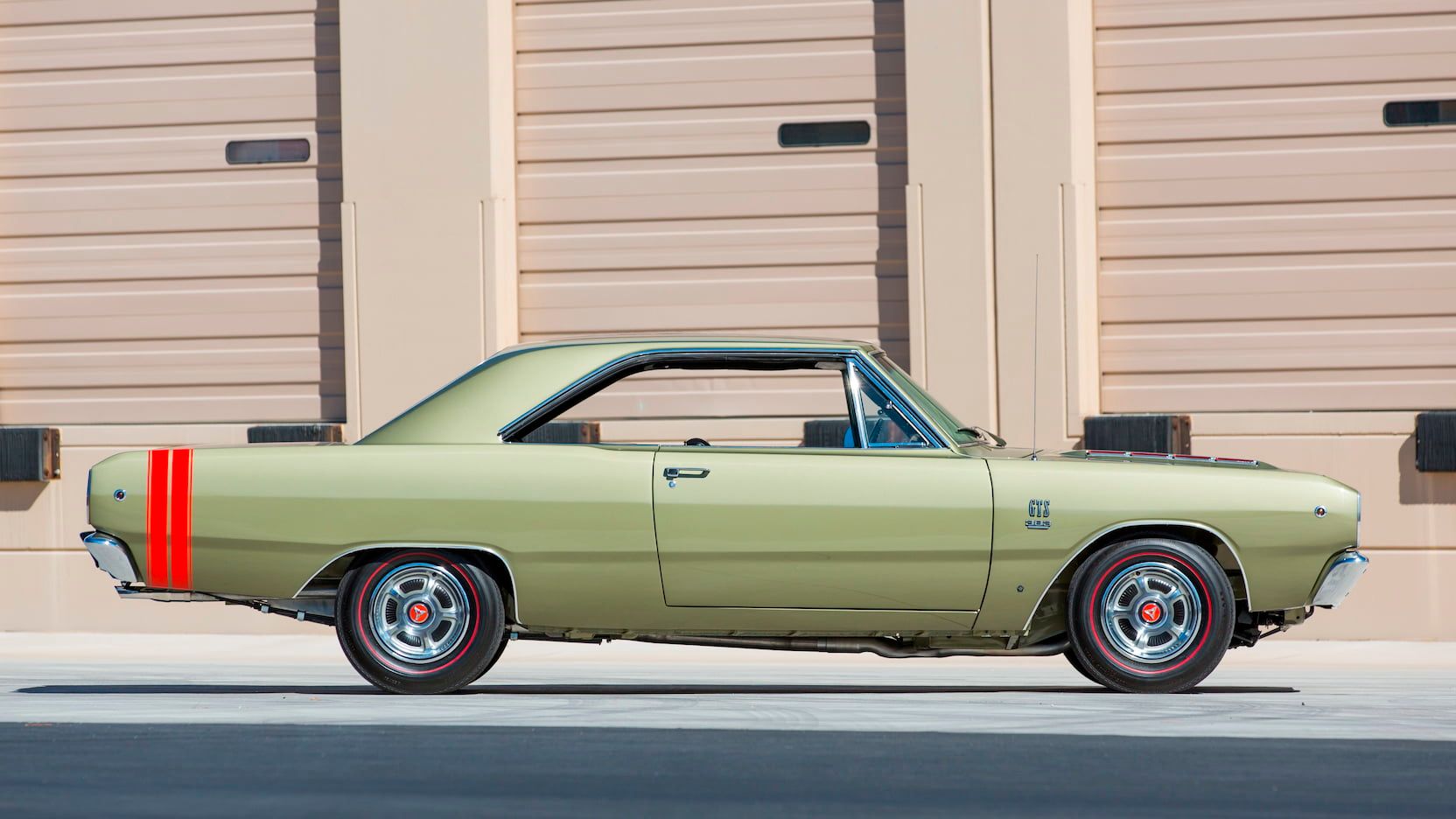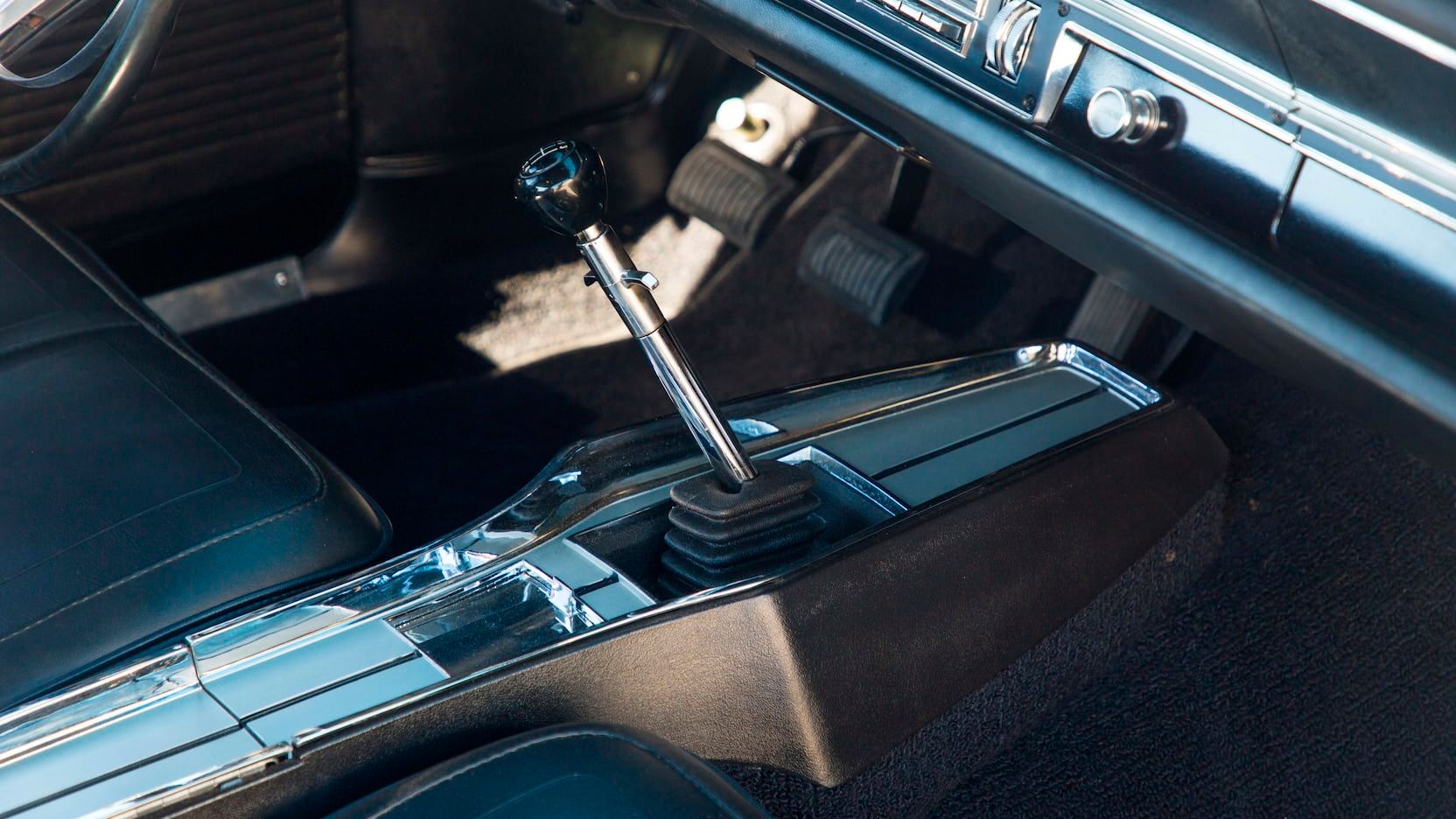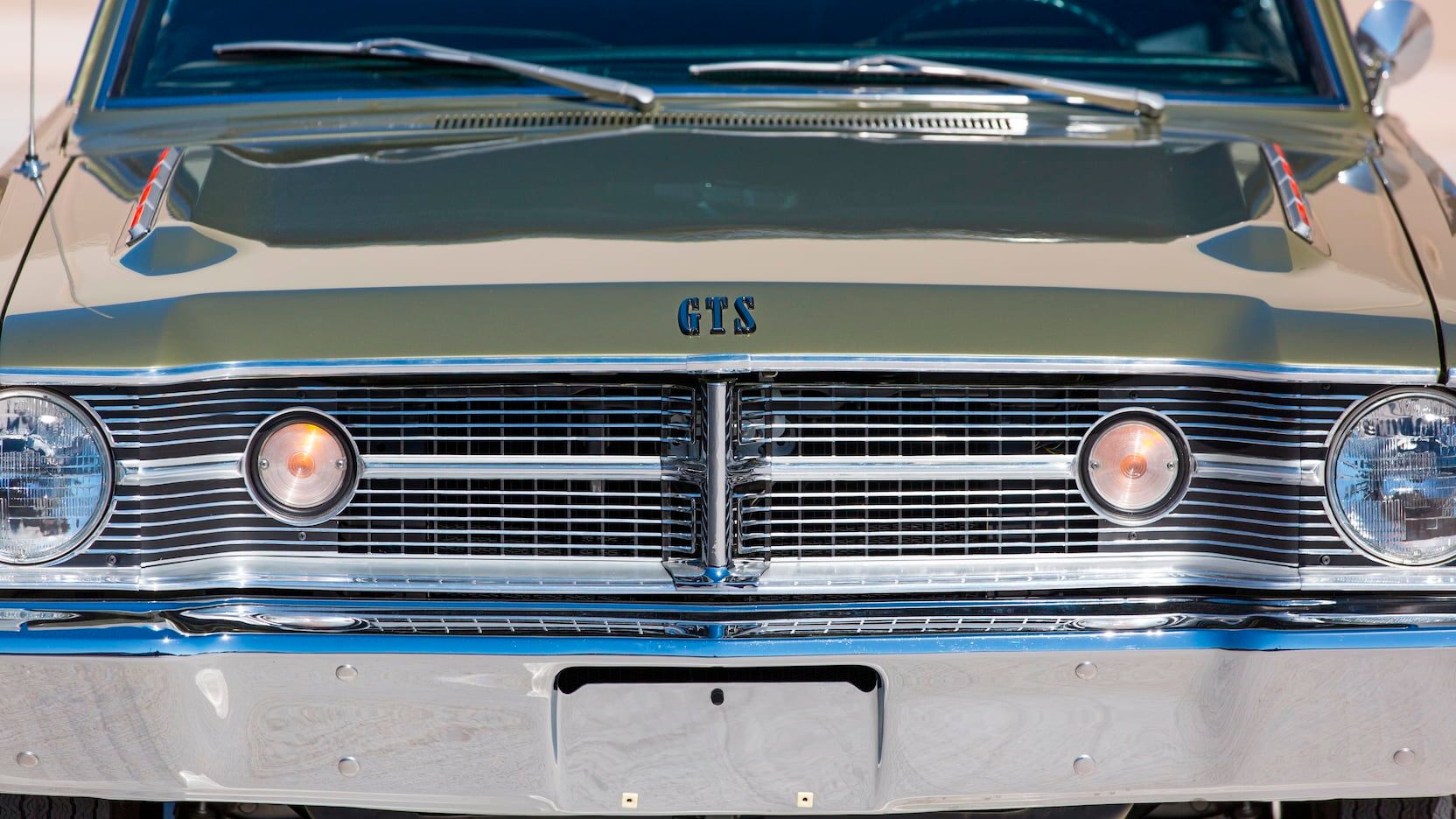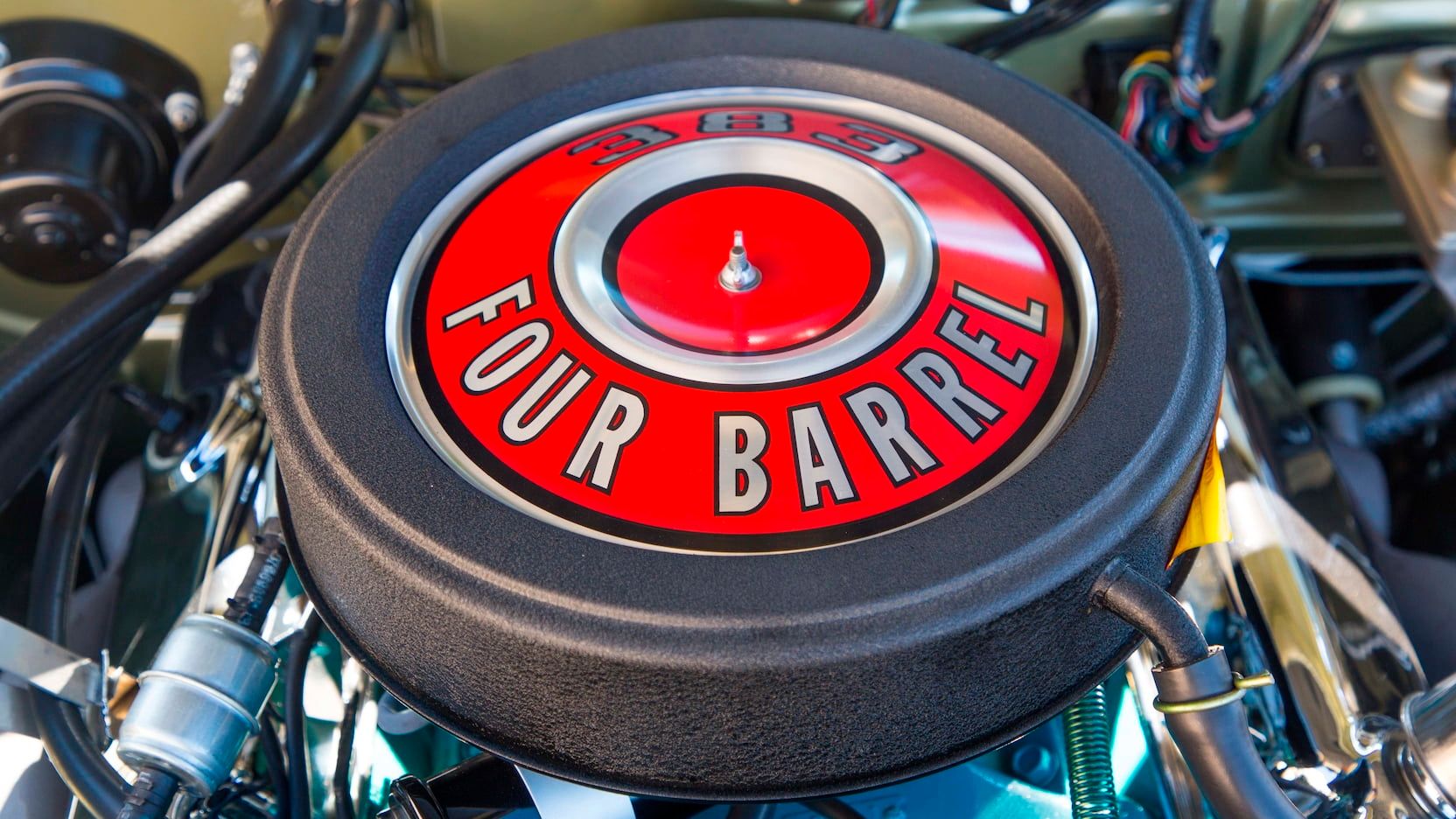The 1968 Dodge Dart GTS is considered a compact muscle car, one that solidified Dodge's performance-oriented image among the young buyers of the '60s. It featured a boxy look by '68, which was carried all the way to the end of the car's lifespan, but what it didn't gain in looks it more than backed up in performance.
The Dodge Dart was originally introduced as a smaller full-size model in 1960 as Dodge's entry-level car. Back then, the Dodge brand was the meat in Chrysler Corporation's sandwich that placed Plymouth as the budget brand and Chrysler at the top of the pile. However, the Dart went on to become the model that bridged the gap in luxury between Dodge and Plymouth.
The Dart never got anywhere near the area of the market governed by Dodge's Charger, but that's also what saw it gather a different kind of fanbase that wanted enjoyable performance for a reduced MSRP. In 1967, the fourth-generation Dart was introduced and, by 1968, the biggest engine you can get on a two-door Dart was the 383 cubic-inch, 6.3-liter V-8, aside from the Hurst-installed 426 cubic-inch, 7.0-liter, Hemi V-8.
1968 Dodge Dart GTS
- Make: Array
- Model: 1968 Dodge Dart GTS
- [do not use] Vehicle Model: Array
1968 Dodge Dart GTS Exterior
According to Hot Rod Magazine, "the Dodge Fever marketing program began in 1967 and was a very successful radio, television, and print effort." It goes on to say that "greater creativity blossomed in 1968 with the arrival of the legendary Dodge Scat Pack theme." It gathered together the B-Body Charger R/T and Coronet R/T alongside the Dart GTS - GTS standing for GT Sport - which were branded as the "the cars with the bumblebee stripes". In the same article, we read that "to our knowledge, the Scat Pack program was the first of its type to gather numerous models under a common theme - thus creating an aura of exclusivity and endless opportunities for cross-promotion as these crazy tail-striped muscle cars burned rubber from coast to coast."
This Dart is one of the receivers of that Scat Pack treatment in 1968 and, in line with Dodge's performance aspirations, it didn't just look the part, it was also fast thanks to the big engine under the hood. Basically, as Hot Rod Magazine puts it, "Dodge made sure any car wearing the hallowed bumblebee stripes was packing major-league heat." What is more, the Scat Pack cars proudly wore the "half car/half insect bumblebee cartoon mascot".
According to Allpar.com, "Essentially a Plymouth Valiant, the 1963-onwards Darts were out of character for Dodge, but they turned out to be just what was needed when the 1973 fuel crisis hit." That's because they weren't in line with the up-market image that Dodge had crafted for itself throughout the '50s. Allpar.com furthers the claim that the Dart "was, in essence, cashing in on Dodge’s premium aura — an aura that, thanks largely to the Dart, would not last." Still, it sold well and the beefed up 1968 GTS models were good value for money.
Below the grille there's a wide front bumper that wraps slightly around the corners of the car. Just before the front wheel wells, there are two, round, orange indicators on both sides. The addition of indicators at the front is mimicked at the tail, one round indicator sitting on the rear quarter panel on both sides just aft of the double Scat Pack stripes. Also part of the changes that were made to the Dart to comply with the new safety standards were the shoulder harnesses and the non-glare matte windshield wiper arms.
The hood features the GTS lettering in the middle in chromed letters. Towards the windshield, the hood bulges and four rectangular inlets open on both sides. The outer edge of the inlets is chromed while the inside is colored in red, supposedly to underline the 'fire-breathing' nature of the Dart GTS.
At the back, the rear window with its compound inverse curves was kept intact which meant that the thick C-pillars restraining visibility were also there. This, however, gave the car an elegant line, similar to the bigger Super Bee model. It also seemed larger thanks to the lack of a B-pillar.
The main talking point at the back is centered, obviously, around the double red Bumblebee stripes that cross that wrap around the rear overhang. The taillights are placed on the corners of the narrow rear panel, angled towards the inside of the bodywork. They are placed horizontally and narrow down towards the middle of the rear fascia. The three-bar middle element features the Dodge lettering on the middle, polished, bar in black characters. The GTS name sits proudly a bit above, on the trunk lid.
The rear bumper completes the look of the back end. Two rectangular exhaust tips exit from under the bumper.
1968 Dodge Dart GTS Exterior Dimensions:
|
Wheelbase: |
108 inches |
|
Length: |
195.4 inches |
|
Width: |
71.6 inches |
|
Height: |
54 inches |
1968 Dodge Dart GTS Interior
The black vinyl interior of the Dart GTS is filled by a pair of individual seats up front and a bench seat in the back. This car comes with Dart-branded carpets.
The gauge cluster includes the odometer, the oil meter, fuel meter, and the battery meter. Next to it to the left, here are the controls for the factory-fitted heater and defroster. Below, on the lower panel, there's the Solid State thumbwheel radio.
The Dart GTS comes with a center console that extends between the front seats. The console hosts the gear shifter with its black rounded knob. The console is covered by some shiny metallic elements which match with those that divide the two panels of the dashboard.
1968 Dodge Dart GTS Drivetrain
First of all, as Hot Rod Magazin also states, there must be made a distinction between the Dart GT and the GTS. "More of a sport luxury package, the Dart GT engine lineup consisted of the 145 horsepower 225 Slant Six, 180hp 273 V8 two-barrel, and 235 horsepower 273 four-barrel." In contrast, the GTS "was big-block all the way, with its 383 low-deck wedge breathing through a Carter AFB ."
All those 300 ponies were sent to the back wheels through a 4-speed manual transmission. The Dart was also available with a three-speed gearbox or an automatic Torqueflit unit.
The suspension on the stock Dart GTS was fairly standard. It was independent up front with upper wishbones, lower arms with struts, torsion bars, and a single stabilizer bar. At the back, a solid axle with semi-elliptic leaf springs carried out the job of smoothening out the bumps. This example, though, comes with heavy-duty torsion bars, springs, shock absorbers, and a front sway bar. All of those negate the understeer effect given by the sheer size and weight of the big-block V-8 engine under the hood.
Drum brakes were standard behind all four wheels although, as an option, you could have discs up front.
1968 Dodge Dart GTS Pricing
The Dart GTS is a car that will only become more expensive as time wears on. Currently, you can find a 1968 Dart for anywhere between $20,000 and $70,000 depending on state, engine options, and extras. A GTS with the 5.7-liter V-8 costs about $60,000 so expect to pay even more for one with the 6.3-liter V-8 and the Scat Pack.
That's also due to the fact that Dodge didn't build too many of these cars in the first place.
1968 Dodge Dart GTS Competition
1968 AMC Javelin
The Javelin was American Motors' answer to the Mustang primarily. It had "a smooth semi-fastback roofline" designed by a team led by Richard Teague. Richard Langworth, in his AMC Javelin books, mentions that "despite management's insistence on things like good trunk space and rear-seat room, Teague managed to endow the Javelin with what he termed the wet T-shirt look: voluptuous curves with nary a hint of fat."
As such, you can't compare the Javelin's shape with that of the Dart, but there was nothing more compact in Dodge's range at the time. The Javelin debuted in 1967 for the 1968 model year and featured "the first industry use of fiberglass safety padding".
The basic engine options for the Javelin included a pair of inline-six engines, with capacity ranging between 3.8-liters and 4.1-liters, and the 4.8-liter V-8 with a two-barrel carburetor. This latter one developed 225 horsepower and offered a top speed of 100 mph.
If you wanted more performance, you had to choose the "Go Package" which came with the 5.6-liter V-8 fed by either a two-barrel carburetor or a high compression four-barrel version. This meatier one produced 280 horsepower and power front disc brakes and the heavy-duty suspension kept the car on the road. There was also a 6.4-liter V-8 introduced midway through 1968 which put out 318 horsepower and 425 pound-feet of torque, enough to put it in Hemi territory.
1968 Chevrolet Chevelle
The 1968 Chevelle, part of the model's second generation, came with revised styling and a shorter 112-inch wheelbase. The lush headlights and bumpers give the car a less muscular look, although there was enough room under the elongated hood for serious engines. A variety of small-block V-8s was available - with capacity anywhere between 5.0-liters and 5.7-liters - as well as a number of big-block options.
The entry-level big block was the 6.5-liter V-8 which came on the very popular SS396 Chevelle. Over 60,000 of those cars were sold in hardtop coupe form alone in 1968. The engine was good enough for 325 horsepower although 350 horsepower and 375 horsepower versions with higher compression ratios and different fuel feed setups were available. That's why the Nova became one of the most popular compact muscle cars of its time, almost rivaling the Camaro.
Read our full review on the 1966 Chevrolet Chevelle SS.
Conclusion
The Dodge Dart is a bit of an oddball in Dodge's range in the late '60s. It offered plenty of grunt for the money but the styling was maybe a bit underwhelming and potential customers decided to pay a little more for a Charger.
Still, what that means is that the Dart GTS is now becoming a rare beast. Yes, the dull Dart variants sold in great numbers - well over 100,000 units in 1968 - but the hardtop coupe GTS version variety barely found 2,100 customers that same year. So, if you want to own Dodge's compact muscle car, you'll have to call in the bank to help you out. If, on top of that, you want it to have the Scat Pack, prepare to go to one more bank for help.
Further reading
Read our full review on the 2016 Dodge Dart.

